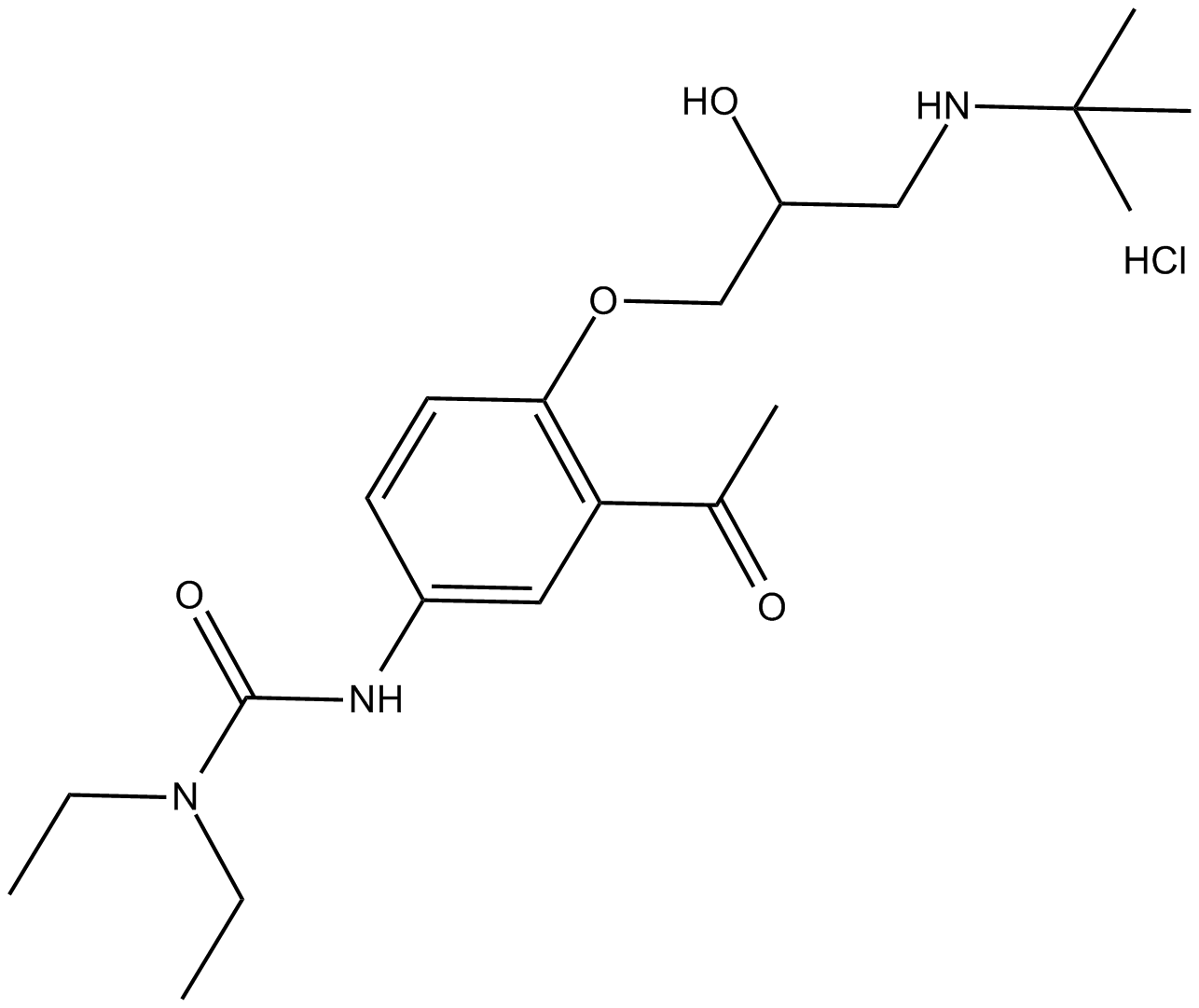Celiprolol (hydrochloride) (Synonyms: Corliprol,NSC 324509) |
| Catalog No.GC12023 |
β1 adrenergic receptor antagonist and β2 adrenergic receptor partial agonist
Products are for research use only. Not for human use. We do not sell to patients.

Cas No.: 57470-78-7
Sample solution is provided at 25 µL, 10mM.
Celiprolol is a β1 adrenergic receptor antagonist and β2 adrenergic receptor partial agonist.
β2 adrenergic receptor agonists, also known as adrenergic β2 receptor agonists, are a class of drugs acting on the β2 adrenergic receptor. Like other β adrenergic agonists, they cause smooth muscle relaxation.
In vitro: The ability of celiprolol to induce the regulation of beta adrenergic receptors was investigated in S49 lymphoma cells. Results showed that celiprolol did not stimulate adenylate cyclase in membranes from wild-type (WT) S49 cells or induced the sequestration of beta adrenergic receptors on intact cells. Moreover, exposure of WT S49 cells to celiprolol led to the loss of around half of the total cellular beta adrenergic receptors [1].
In vivo: In a previous study, Japanese white rabbits underwent 30 min of ischemia and 48 h of reperfusion. Celiprolol was administered 20 min before ischemia with or without pretreatment with N(omega)-nitro-L-arginine methylester (L-NAME) or 5-hydroxydecanoic acid sodium salt (5-HD). Results showed that celiprolol could significantly reduce the infarct size dose-dependently. The infarct size-reducing effect of celiprolol was found to be completely blocked by L-NAME but not by 5-HD. In addition, celiprolol could increase the myocardial interstitial levels of NOx and reduce the intensity of myocardium staining [2].
Clinical trial: In a previous clinical study, the authors suggested that celiprolol might be the treatment to prevent major complications in patients with vascular Ehlers-Danlos syndrome [3].
References:
[1] Reynolds EE, Molinoff PB. Down regulation of beta adrenergic receptors in S49 lymphoma cells induced by atypical agonists. J Pharmacol Exp Ther. 1986 Dec;239(3):654-60.
[2] Chen, X. ,Minatoguchi, S.,Arai, M., et al. Celiprolol, a selective β1-blocker, reduces the infarct size through production of nitric oxide in a rabbit model of myocardial infarction. Circulation Journal 71(4), 574-579 (2007).
[3] Ong KT et al. Effect of celiprolol on prevention of cardiovascular events in vascular Ehlers-Danlos syndrome: a prospective randomised, open, blinded-endpoints trial. Lancet. 2010 Oct 30;376(9751):1476-84.
Average Rating: 5 (Based on Reviews and 9 reference(s) in Google Scholar.)
GLPBIO products are for RESEARCH USE ONLY. Please make sure your review or question is research based.
Required fields are marked with *




















